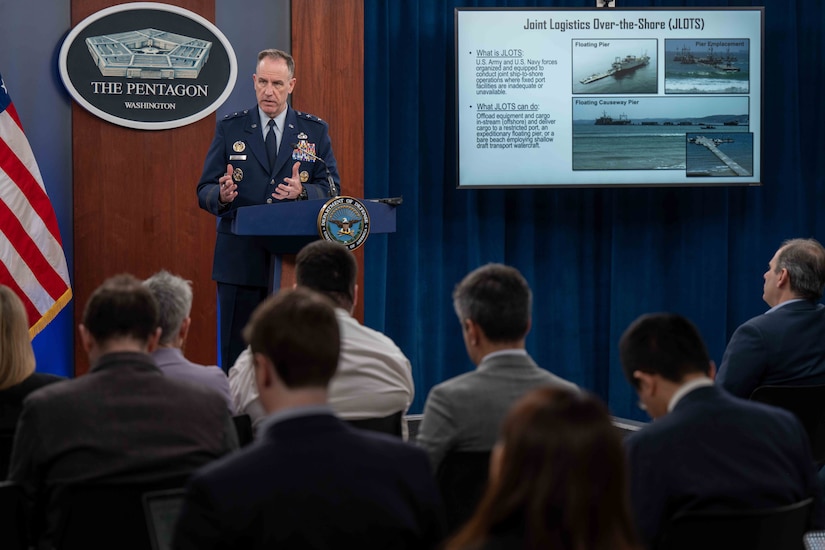The Department of Defense will undertake an emergency mission to establish a temporary pier on the coast of Gaza to deliver up to 2,000,000 humanitarian aid meals per-day, the Pentagon announced today.
The announcement comes less than a day after the State of the Union address, when President Joe Biden called on the military to lead such an operation.
The mission, which will be under the command of U.S. Transportation Command and conducted by the 7thTransportation Brigade from Joint Base Langley-Eustis, Virginia, and other forces, will deploy DOD’s Joint Logistics Over-the-Shore capability, or JLOTS, with a goal of beginning delivery operations in approximately 60 days.
The components of the JLOTS include a floating pier, an approximately 1,800-foot-long causeway that will be attached to the shore, and a group of logistic support vessels and barges that will transport the aid from the pier to the causeway. Once the aid has reached the two-lane causeway, it can be transported to the land and distributed to Gaza, according to Pentagon Press Secretary Maj. Gen. Pat Ryder, who explained the planned JLOTS mission to the media during today’s briefing.
“This is part of a full-court press by the United States to not only focus on working on opening up and expanding routes via land, which are the optimal way to get aid into Gaza, but also by conducting air drops,” said Ryder, in reference to the more than 100,000 meals that have been dropped into Gaza by the U.S. and Jordan during the past week.
“As the president has said, not enough aid is getting in [to Gaza],” Ryder continued, “so [JLOTS] is a capability… that we are going to execute and enable us to get… up to 2,000,000 meals in a day.”
Ryder stressed that, just as now, there will be no U.S. boots on the ground when the JLOTS mission begins.
“The ability to do this without putting forces on ground is due to the fact that the causeway is essentially modular, built at sea, and then driven into the ground from offshore,” Ryder stated. “We’ll be working with partners in the region to be on the receiving end of [the JLOTS installation], but at no time will we require U.S. forces to actually go on the ground. Our role will be essentially to provide the service of getting [the aid] to the causeway, at which point it will then be distributed.”
Ryder added that mission planners have suggested Cypress as one possible location where aid could be loaded onto commercial vessels for transport to the floating pier off Gaza.
In terms of security for JLOTS and who will provide it, Ryder said DOD is currently working with partners in the region, including Israel, to make that determination.
“Certainly, one of the key things that we’re going to be focused on is the security of our personnel and working with partners in the region to ensure that the aid that is delivered can be distributed in a safe and secure way,” Ryder said.
The 60-day timeline for JLOTS to become operational off Gaza includes the time it will take to transport some of the JLOTS components from Virginia to the Middle East, Ryder said.
JLOTS capabilities have been deployed by DOD in many countries and regions in need of humanitarian aid and disaster relief over the years, with the most recent deployment being in support of Exercise Talisman Sabre, a large-scale joint defense exercise between Australia and the United States.








